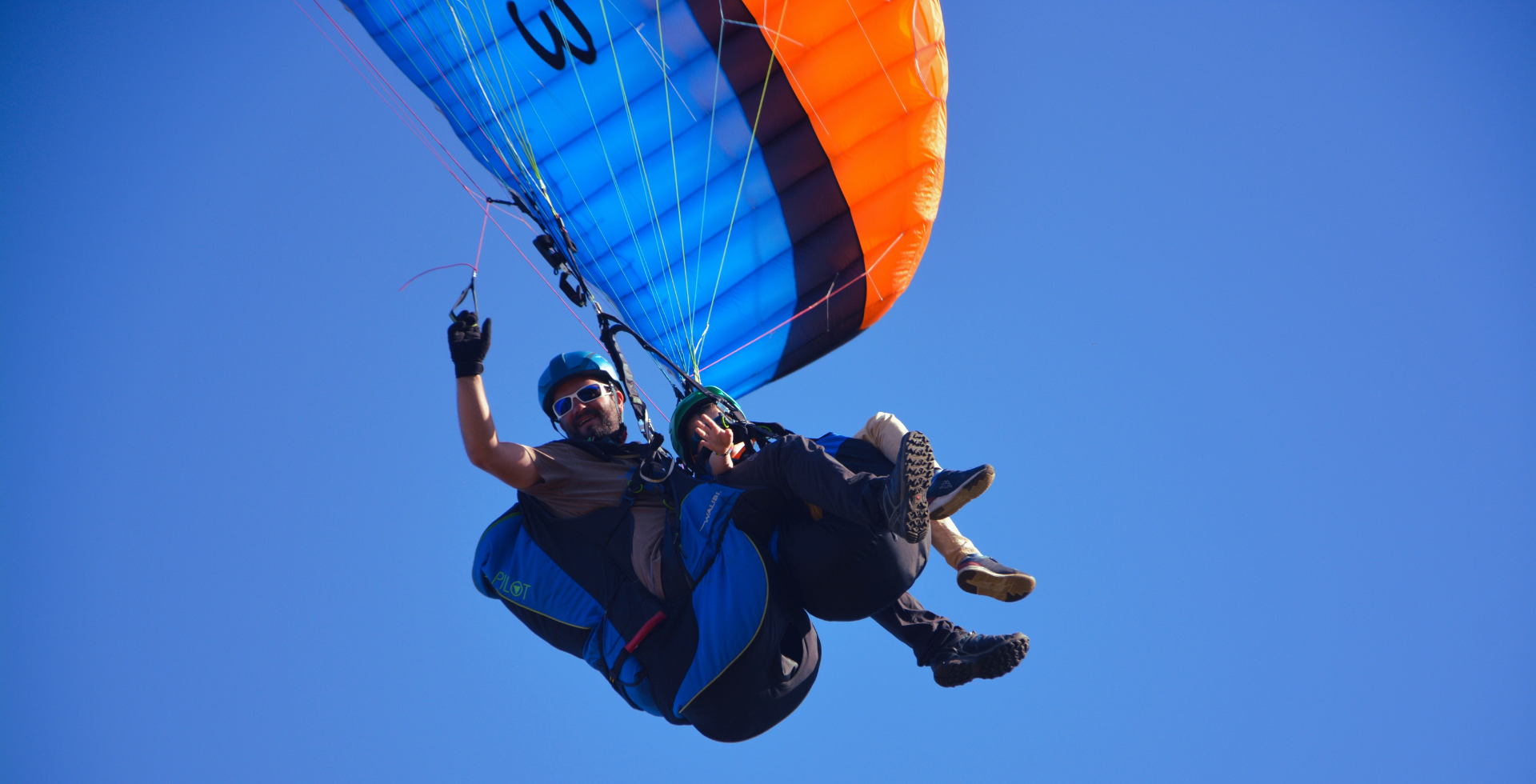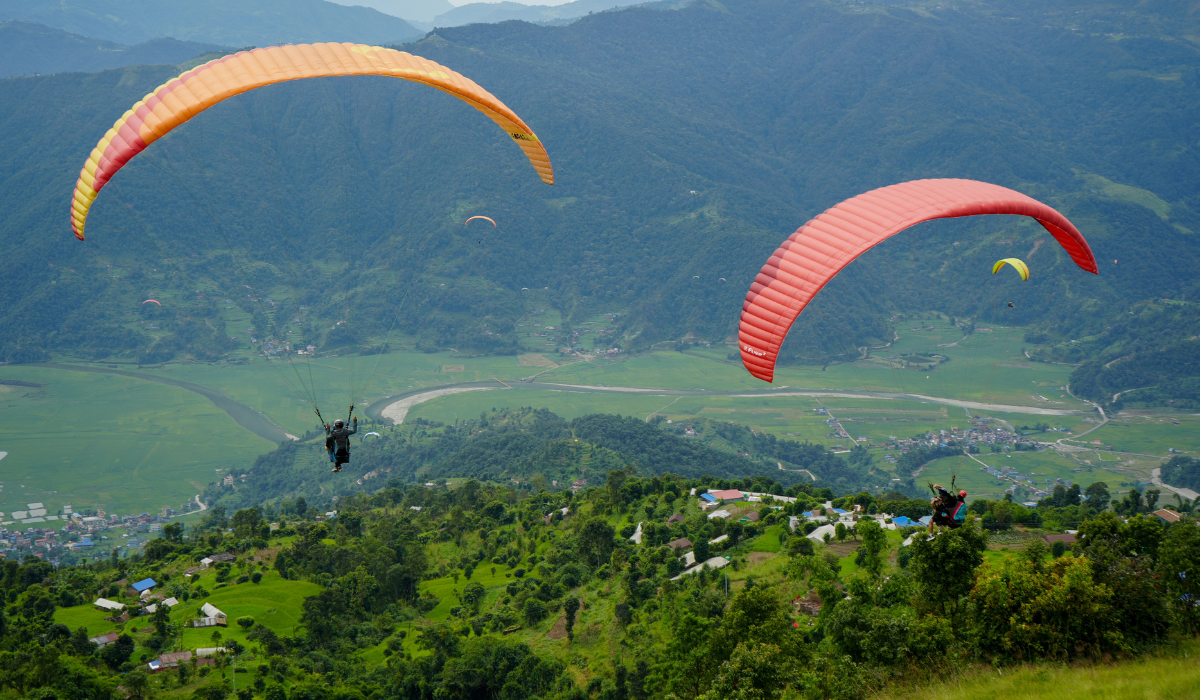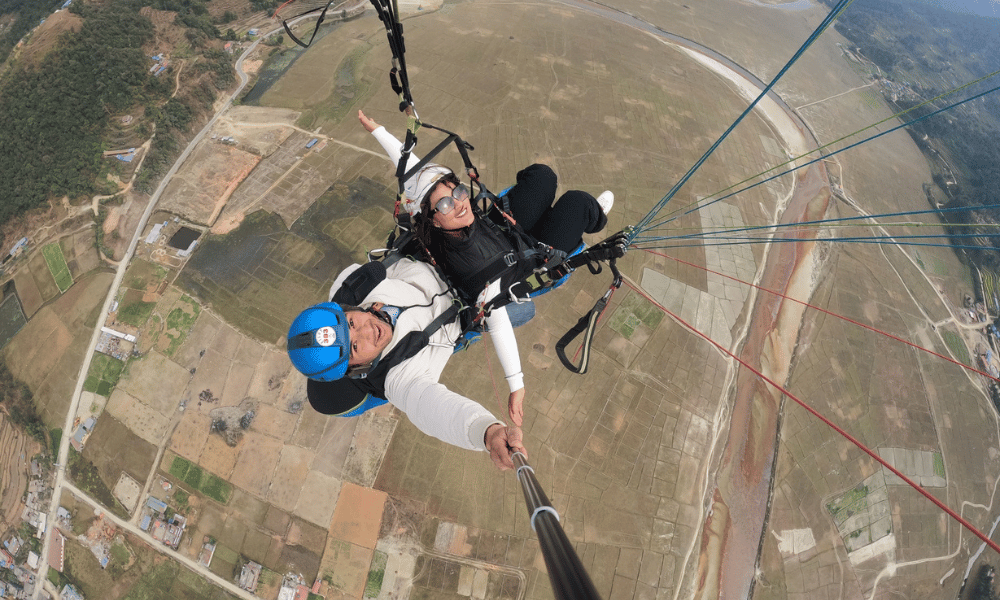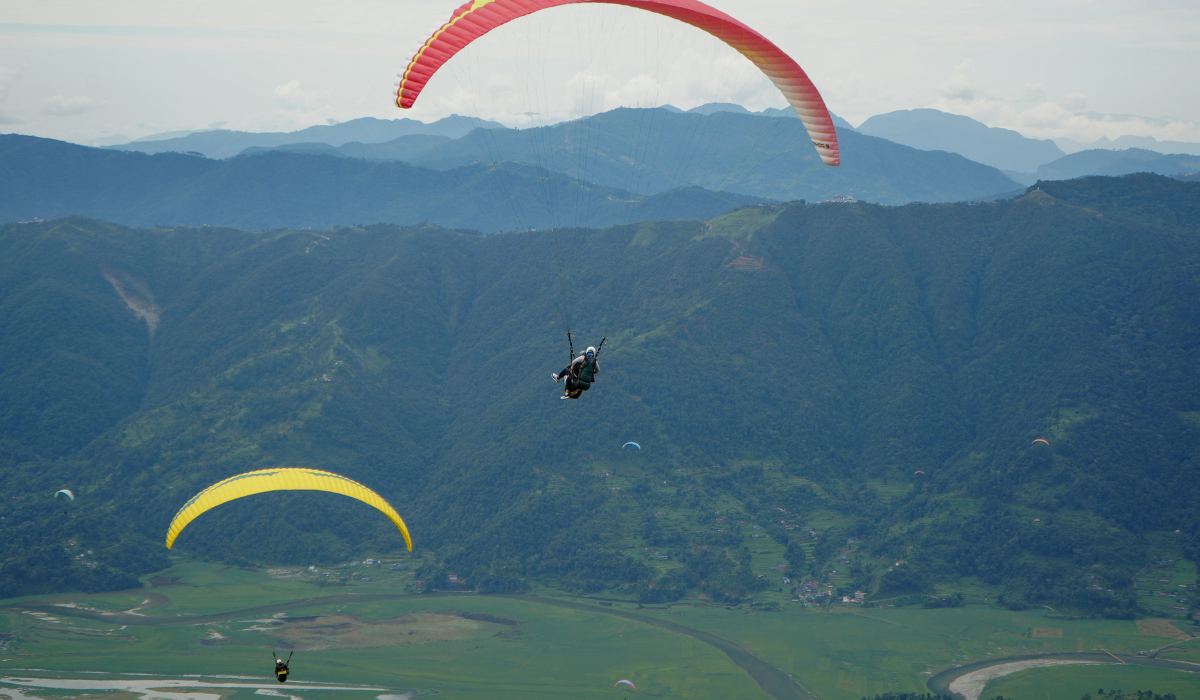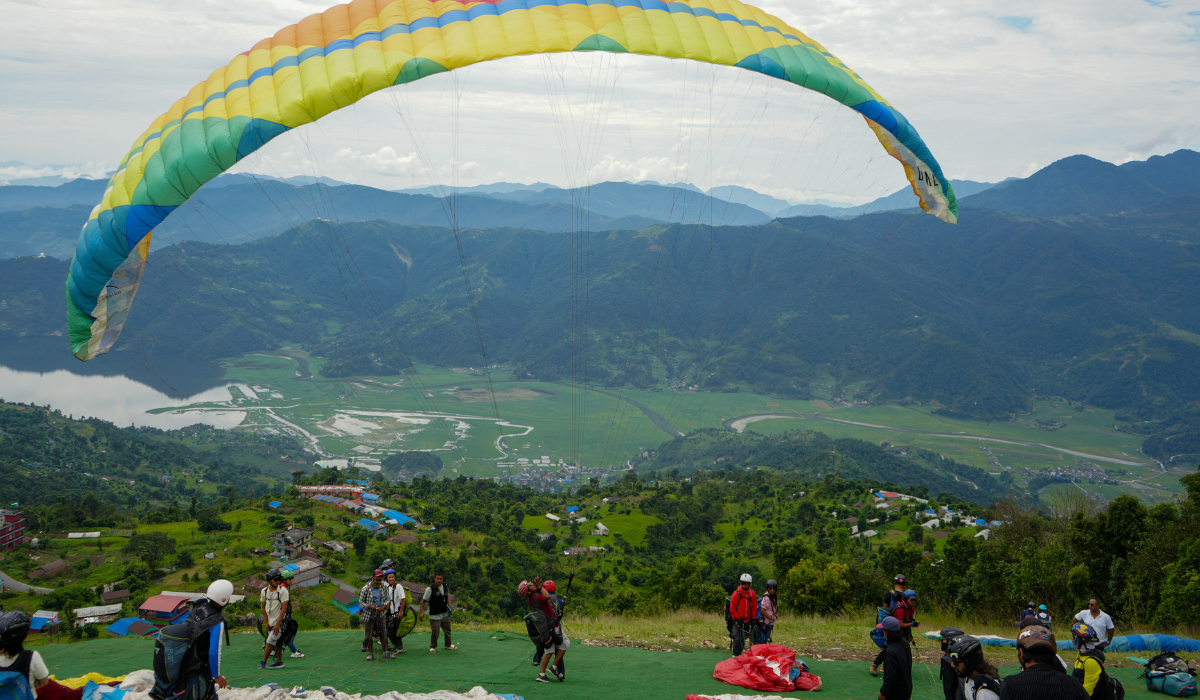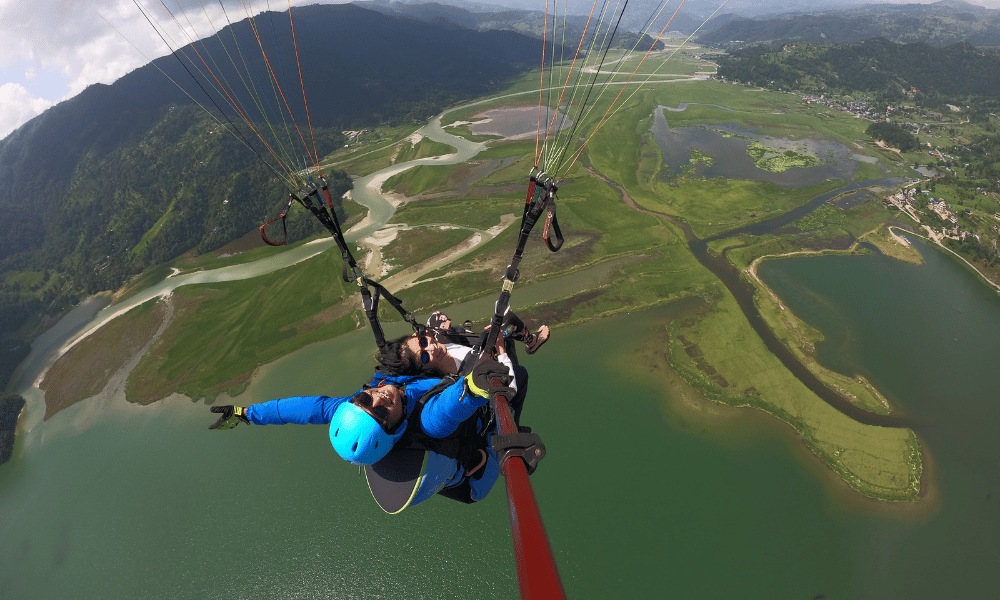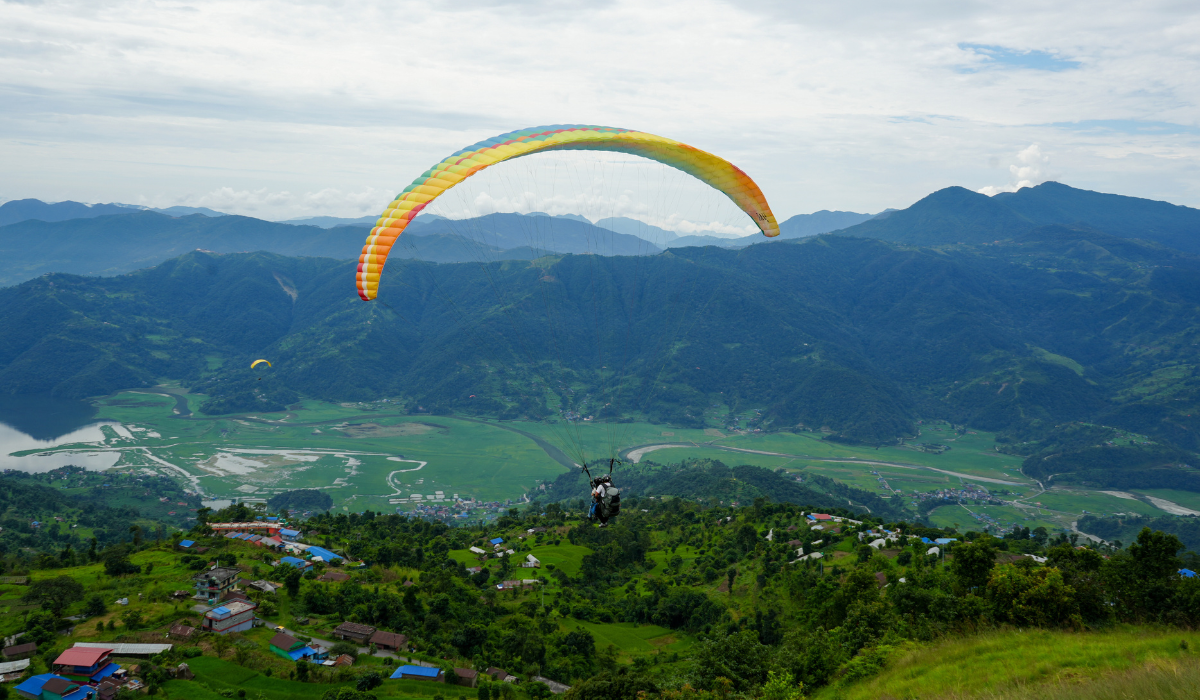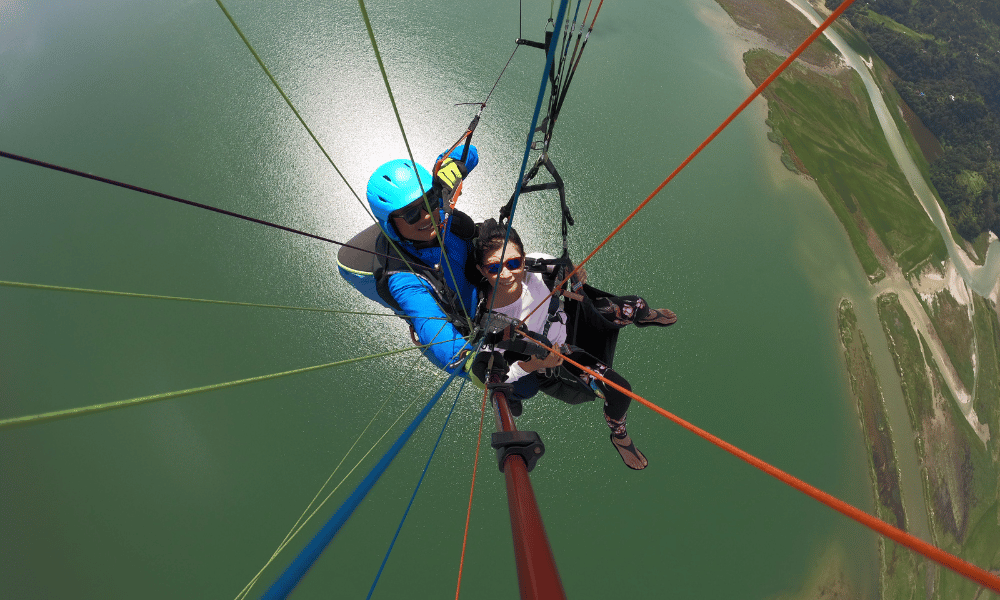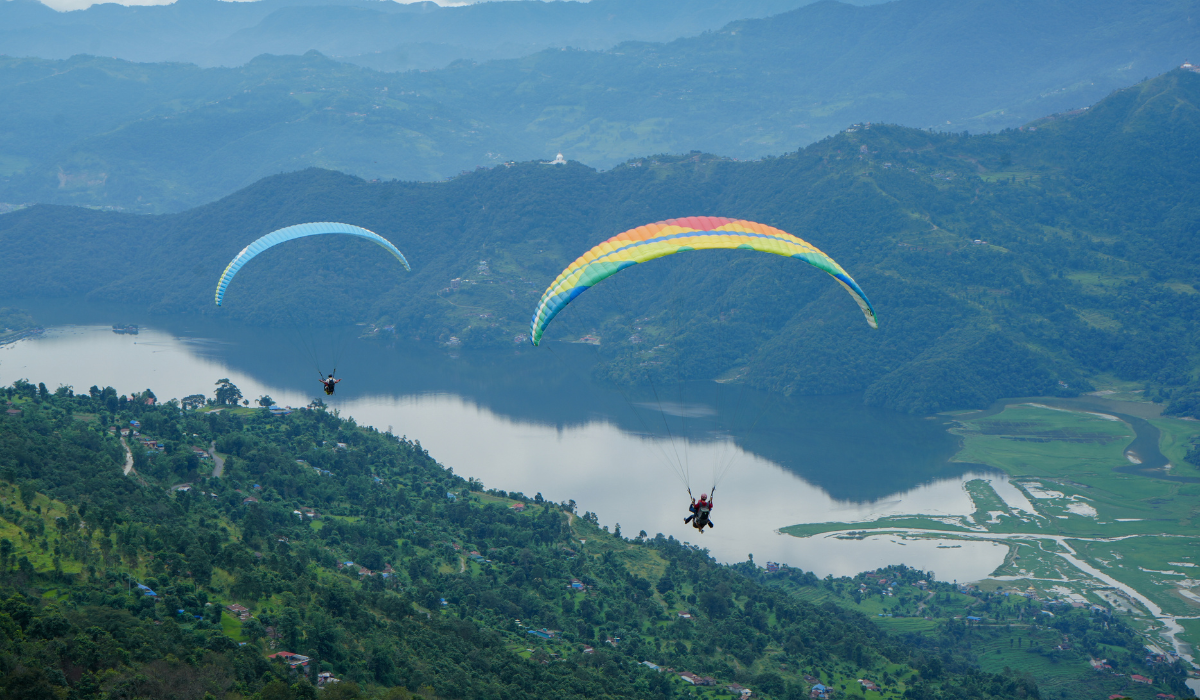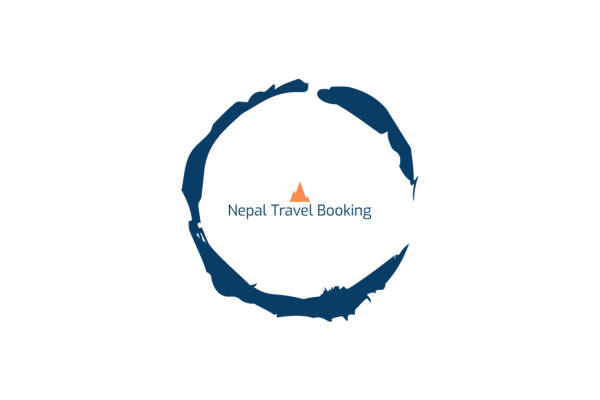Pokhara is the third largest city in Nepal, renowned for its stunning natural beauty and as a gateway to the Annapurna Circuit, a popular trekking trail in the Himalayas. Situated about 200 kilometers west of the capital, Kathmandu, Pokhara sits at an altitude of approximately 827 meters above sea level, making it much lower than many other major cities in the country. Paragliding in Pokhara is one of the popular adventure sports among the visitors.
The city is nestled beside the shimmering Phewa Lake, the second largest lake in Nepal, which reflects the image of the snow-capped Machhapuchhre peak and other mountain ranges. Its serene environment and picturesque landscape have made it a hotspot for tourists, both domestic and international.
Pokhara is also famous for its adventure and extreme sports tourism. It is considered the tourism capital of Nepal, offering activities like boating, hiking, pony rides, paragliding, bungee jumping, white-water rafting, and ultra-light aircraft rides. Among these, paragliding is the most popular, thanks to the ideal wind conditions, stable thermals, and the breathtaking panoramic views of the Himalayan range.
The city also holds cultural significance, with a mix of Hindu and Buddhist heritage. It is home to several medieval era temples, old bazaars, and culturally rich Newar communities. The annual festivities and events that take place in Pokhara draw crowds from all around.
Pokhara is a significant city in Nepal for its contribution to tourism, its cultural heritage, and its unique adventure offerings like paragliding which provide unforgettable experiences to visitors.
Experiencing Paragliding in Pokhara as a Tandem Passenger
Tandem paragliding is a popular choice for beginners, those who don’t wish to paraglide solo, or for individuals who simply want to experience the thrill of flight with the safety and guidance of an experienced pilot.
Pre-Flight Briefing:
The tandem paragliding experience typically begins with a safety briefing from the professional pilot. This includes an overview of the flight, what to expect, and instructions on takeoff and landing procedures. The passenger is then securely strapped into a harness which is attached to the pilot’s harness.
Take-Off:
The take-off process involves the pilot inflating the wing by running forward with the passenger until the canopy lifts them off the ground. As a passenger, you need a short, brisk run on the pilot’s cue to help launch into the air. It’s a moment filled with adrenaline, quickly replaced by the calm and serenity of soaring in the sky.
In-Flight Experience:
Once airborne, the passenger can relax and enjoy the flight while the pilot navigates the air currents. Soaring high above Pokhara, passengers are treated to stunning views of the Phewa Lake, lush forests, terraced fields, and the spectacular panorama of the Annapurna range. Many tandem pilots also allow passengers to control the paraglider under their supervision, adding an extra thrill to the experience.
Landing:
The pilot handles the landing, but the passenger plays a vital role in executing a safe and smooth touchdown. The pilot will guide the passenger on when to prepare for landing and may ask them to stand up or lift their legs at the appropriate time.
Post-Flight:
The exhilaration of the flight often leaves passengers in awe, filled with a sense of accomplishment and the thrill of having experienced something unique and adventurous.
Tandem paragliding provides an opportunity for practically anyone to experience the thrill of free-flight without extensive training or experience. It’s an unforgettable experience that often serves as an introduction to the world of paragliding, sparking a desire to learn more and perhaps even pilot a solo flight one day.
Basic Concept and Components of Paragliding
Paragliding is a form of unpowered flight in which the pilot launches themselves from high ground, relies on air currents to stay aloft, and controls their direction and speed by manipulating the fabric wing, or canopy. The sport is both thrilling and serene, as pilots can stay aloft for extended periods and cover significant distances, simply by harnessing the power of the wind and weather.
Paragliding Gear: Wing or Canopy, Harness, Reserve Parachute
The primary components of a paragliding setup include the wing or canopy, harness, and a reserve parachute.
- Wing or Canopy: The canopy, sometimes referred to as a wing, is the most recognizable part of a paraglider. Made from strong, lightweight materials, the canopy is designed to fill with air and create an aerodynamic shape (aerofoil) that generates lift. The wing’s design allows the pilot to control speed and direction by manipulating the trailing edge of the wing.
- Harness: The harness is where the pilot sits during flight. It’s attached to the wing by numerous lines that help maintain the shape of the wing and allow the pilot to control the flight. Most harnesses include pockets and compartments for instruments and other gear, and some have a built-in reserve parachute container.
- Reserve Parachute: Although incidents requiring a reserve parachute are rare in paragliding, safety-conscious pilots always fly with one. Reserve parachutes are designed to be deployed quickly in case of an emergency, such as a significant equipment failure or mid-air collision.
How Paragliding Works – Thermals, Ridge Lifts
Paragliding exploits the same principles of flight used by birds. Two key concepts that keep a paraglider aloft are thermals and ridge lifts.
- Thermals: A thermal is a column of rising air that is created when the sun heats the surface of the earth, warming the air above it. As the warm air rises, it creates an updraft. Paragliders seek out these thermals and circle within them to gain altitude. This concept is known as “thermalling.”
- Ridge Lifts: Ridge lift is created when wind encounters a ridge (or mountain) and is deflected upward. Paragliders can use this upward-moving air to stay aloft and travel along the ridge.
Understanding and exploiting these natural air movements is the key to extended flights, cross-country adventure, and even competitive paragliding. The best paragliding pilots are those who have a deep understanding of weather and air movement, and who can use this knowledge to their advantage in flight.
The emotional journey – Thrill, Serenity, Accomplishment
Paragliding is not just a physical experience; it is also a profound emotional journey that includes moments of thrill, serenity, and accomplishment.
Thrill: The thrill begins even before the actual flight, during the preparation and anticipation phase. As the paraglider gets ready for takeoff, adrenaline starts to surge. The excitement reaches its peak during takeoff when the paraglider lifts off from the ground and starts to ascend. It’s an exhilarating feeling, something akin to breaking the bonds of gravity and soaring towards the sky.
Serenity: Once aloft, the thrill gradually gives way to a sense of serenity. High above the ground, floating in the wide-open sky with the earth’s beauty spread out below, the paraglider experiences a unique calm. The sensation is often described as peaceful and liberating, offering a sense of tranquility that is hard to find elsewhere. It’s just the pilot, the vast sky, and the rhythm of the wind – a perfect escape from the hustle and bustle of everyday life.
Accomplishment: As the flight nears its end and the paraglider prepares for landing, a sense of accomplishment starts to build. Touching down safely brings a rush of satisfaction and achievement. Regardless of whether it’s a person’s first flight or their hundredth, every successful paragliding journey brings a feeling of victory and fulfillment. It’s not just about having conquered the sky; it’s also about having pushed personal boundaries and having lived an extraordinary adventure.
Paragliding offers a rich and varied emotional journey that resonates deeply with those who undertake it. It’s a unique blend of adrenaline, peace, and achievement that leaves an indelible imprint on the heart and mind, often luring individuals back time and again for another taste of the sky.
Pokhara Paragliding Facts
|
Activity |
Paragliding |
|
Operating Hours |
Early Flight: 09:00 AM Late Flight: 01:00 PM |
|
Age Limit |
Minimum: 5 Years Maximum: Not Applicable |
|
Weight Requirement |
Minimum: 25 KG Maximum: 90 KG |
|
Best Months |
September to December February to May |
|
Duration |
Short: 20 – 30 Minutes Extended: 40 – 60 Minutes |
|
Major Attractions |
Valley View Lakes View Mountains View |
WHAT IS PARAGLIDING?
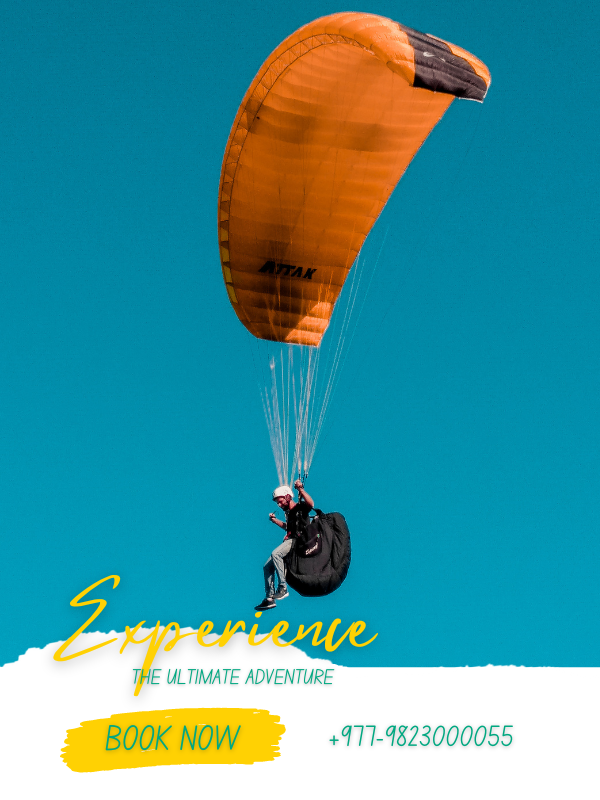
Paragliding is a recreational and competitive adventure sport that involves flying paragliders: lightweight, free-flying, foot-launched glider aircraft with no rigid primary structure. The pilot is seated in a harness suspended below a fabric wing, whose shape is formed by the pressure of air entering vents in the front of the wing.
Unlike hang gliders which have a rigid frame to maintain the shape of the wing, paragliders are shaped by the flow of air over the surface of the wing in conjunction with lines that run from different sections of the wing to the harness. The flexible nature of the paraglider wing means it can be packed into a small space and carried in a backpack, making it very portable and easy to transport compared to other forms of flight.
Paragliding flights can last many hours and cover hundreds of kilometers, although flights of one to two hours and covering some tens of kilometers are more typical. Pilots steer using brake toggles which change the shape of the rear edge of the wing.
A key aspect of paragliding is finding rising air to provide lift. This can come from thermals (columns of warm, rising air), ridge lift (caused by wind being deflected by a slope), or convergence zones (where different air masses meet and are forced upwards). Some paragliders also use small engines (‘paramotors’) to extend their flight.
Safety is an important consideration in paragliding, and pilots use a variety of equipment such as helmets, reserve parachutes, and GPS units for navigation and tracking. It is a sport that requires training and skill, but for those who undertake it, paragliding offers an exhilarating way to see the world from a whole new perspective.
Paragliding Price in Pokhara
STANDARD TANDEM FLIGHT
NPR 8500 / Per Person- The activity cost.
- Two way transfer from Lakeside area.
- Photo and video of the activity.
- Insurance worth USD 15000.
- All government taxes and fees.
A standard tandem flight usually lasts between 20 to 30 minutes.
Cross Country Flight
NPR 13000 / Per Person- The activity cost.
- Two way transfer from Lakeside area.
- Photo and video of the activity.
- Insurance worth USD 15000.
- All government taxes and fees.
A cross-country tandem flight, which lasts about 40 to 60 minutes.
The cost of paragliding activity and packages in Pokhara varies depending on the operator, time period and the specifics of the flight. As of the last update, the typical range is between NPR 8500 to NPR 13000 for a tandem flight.


